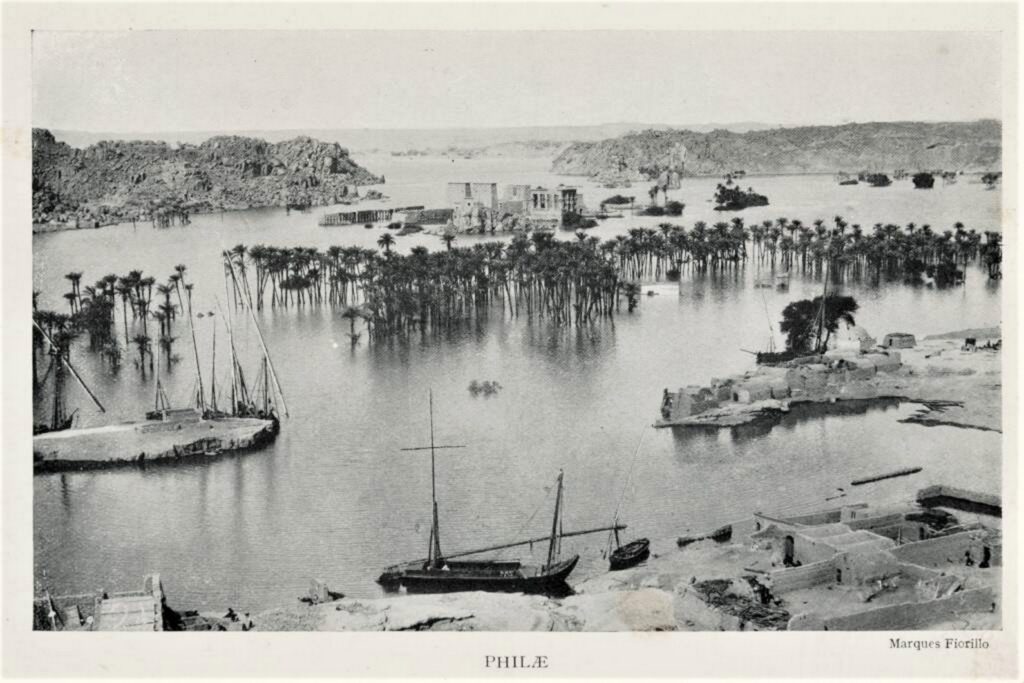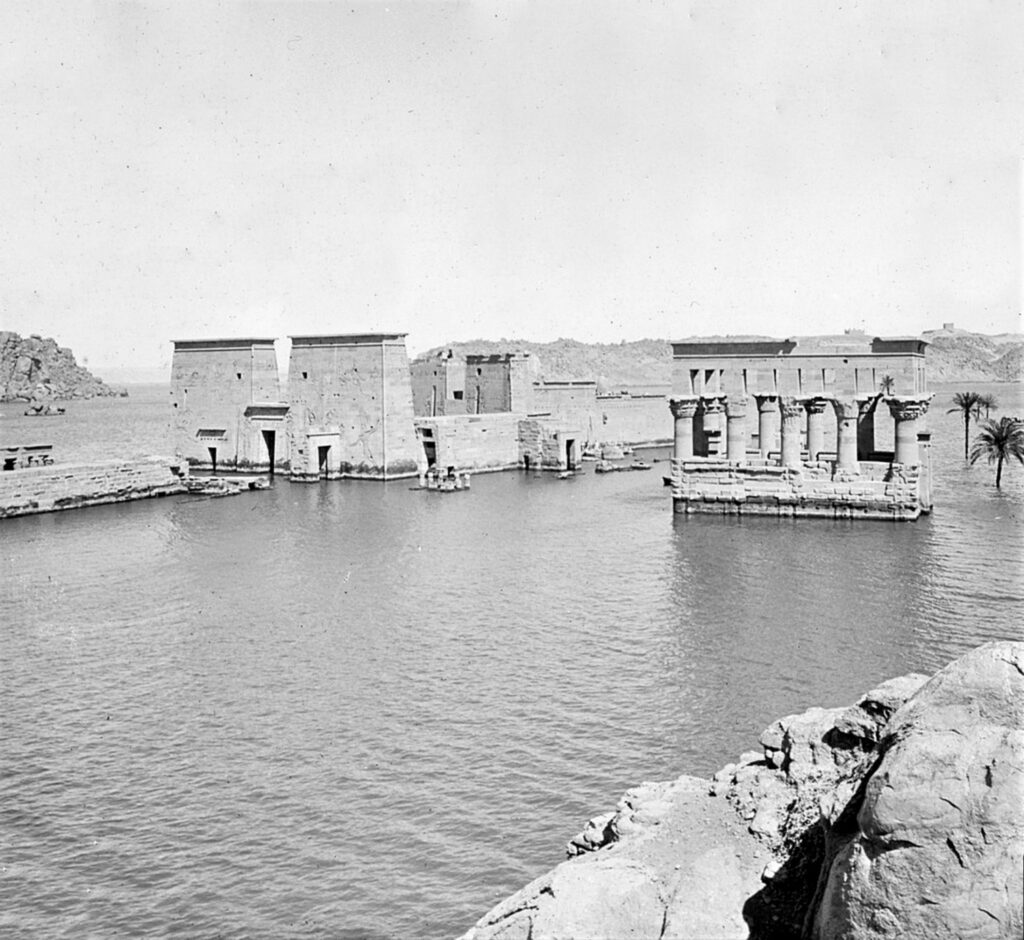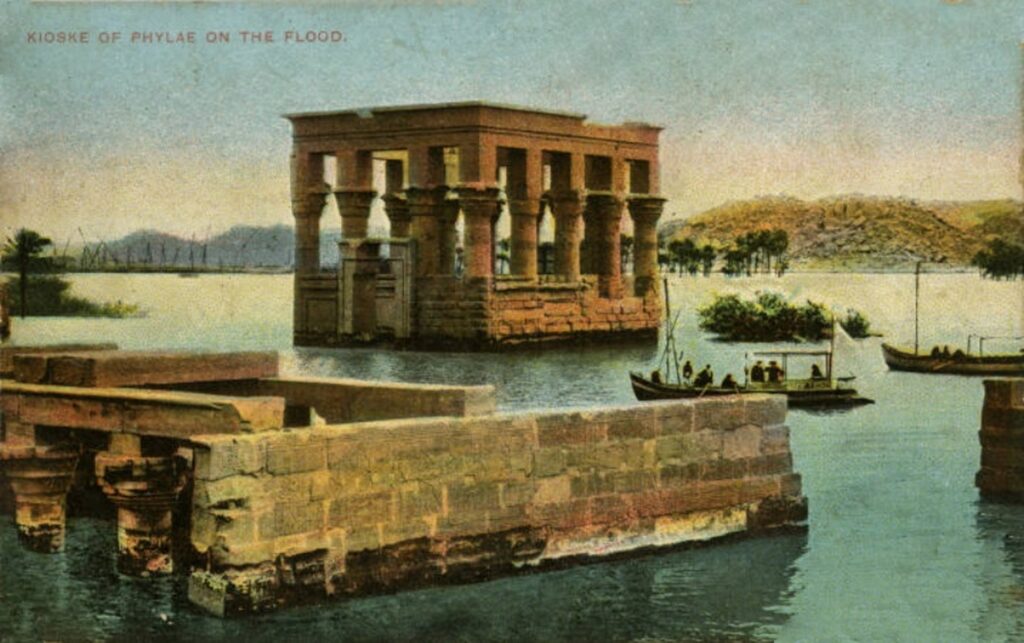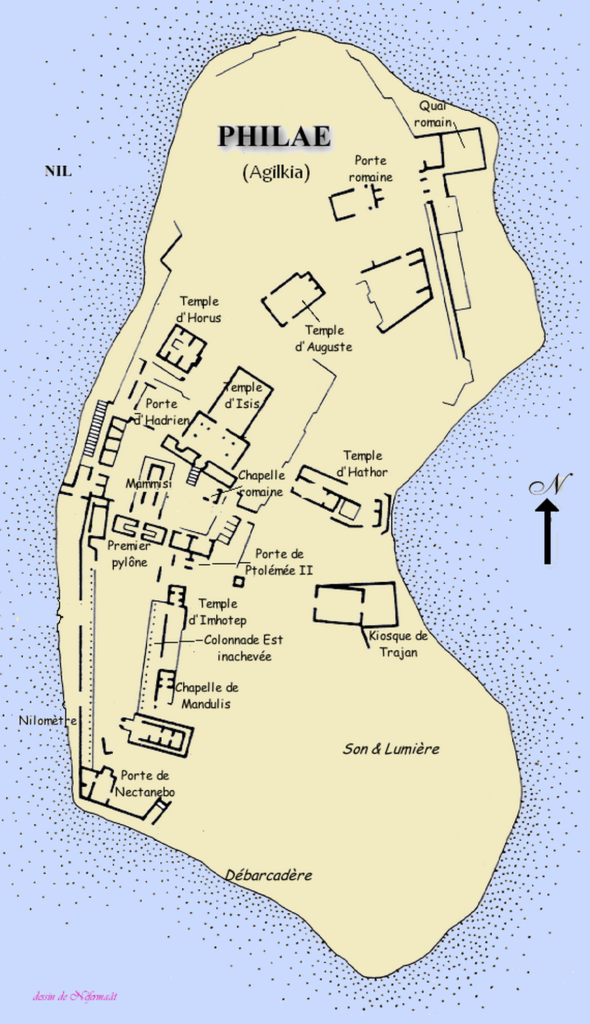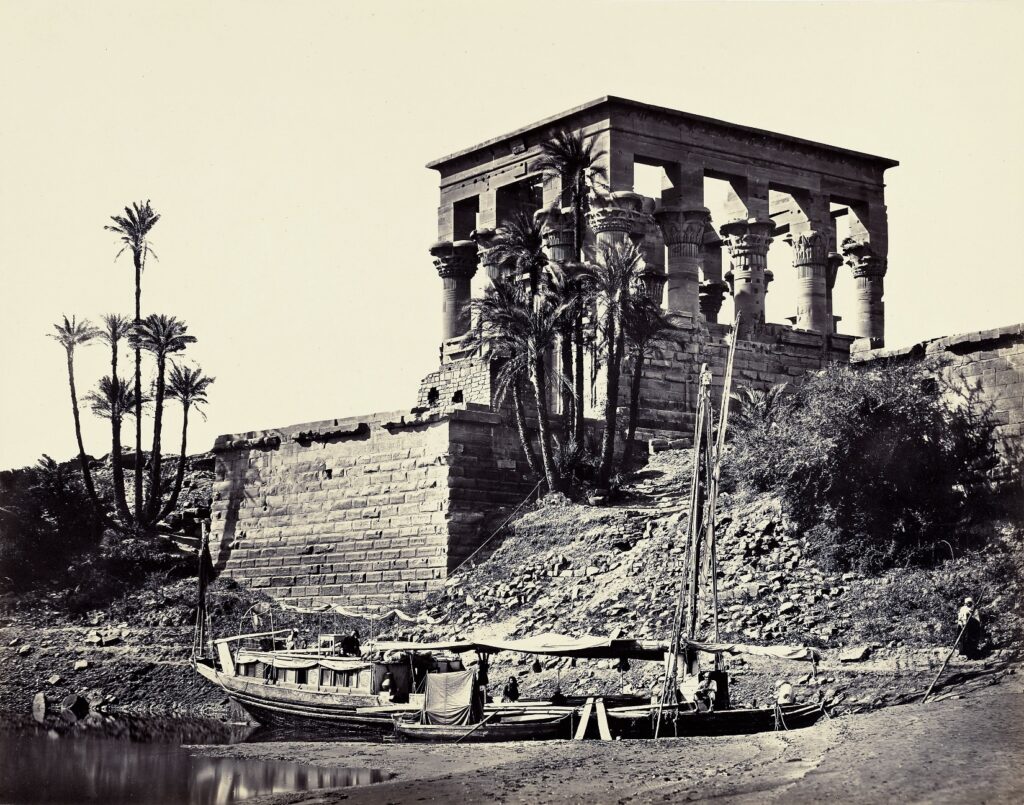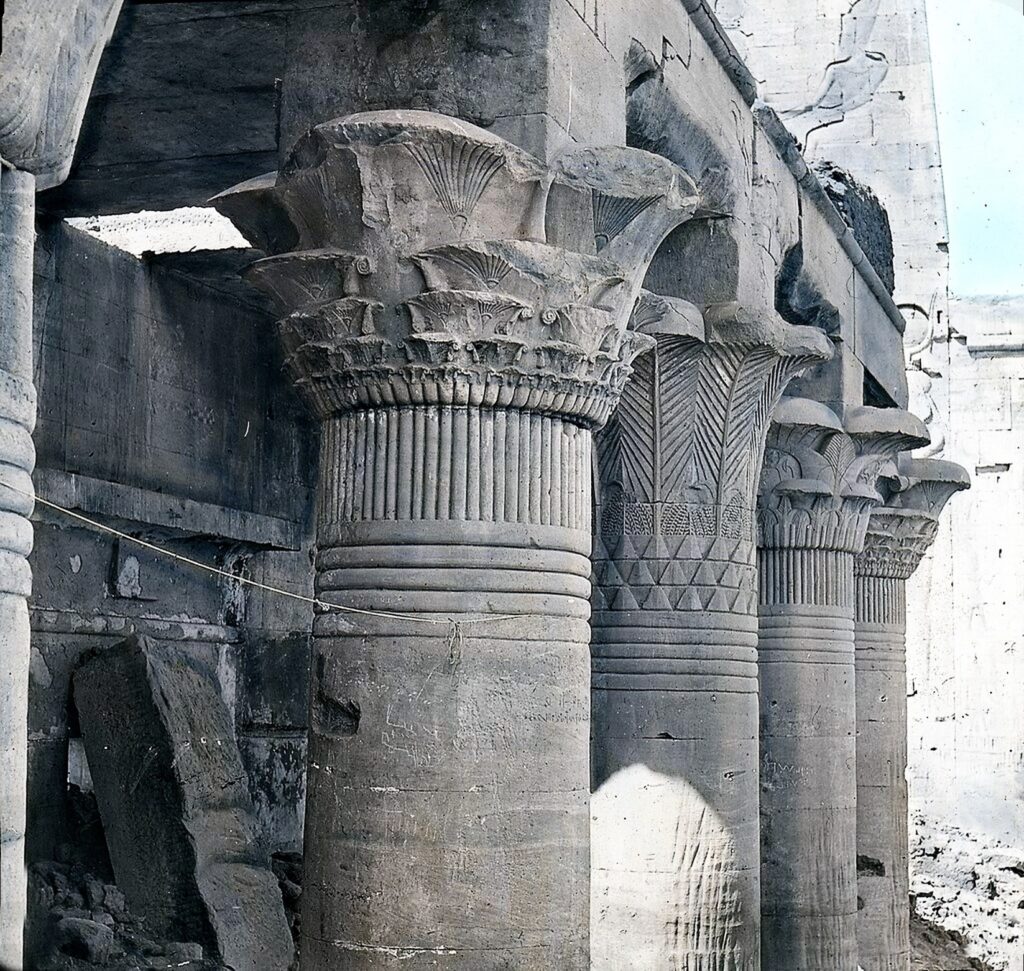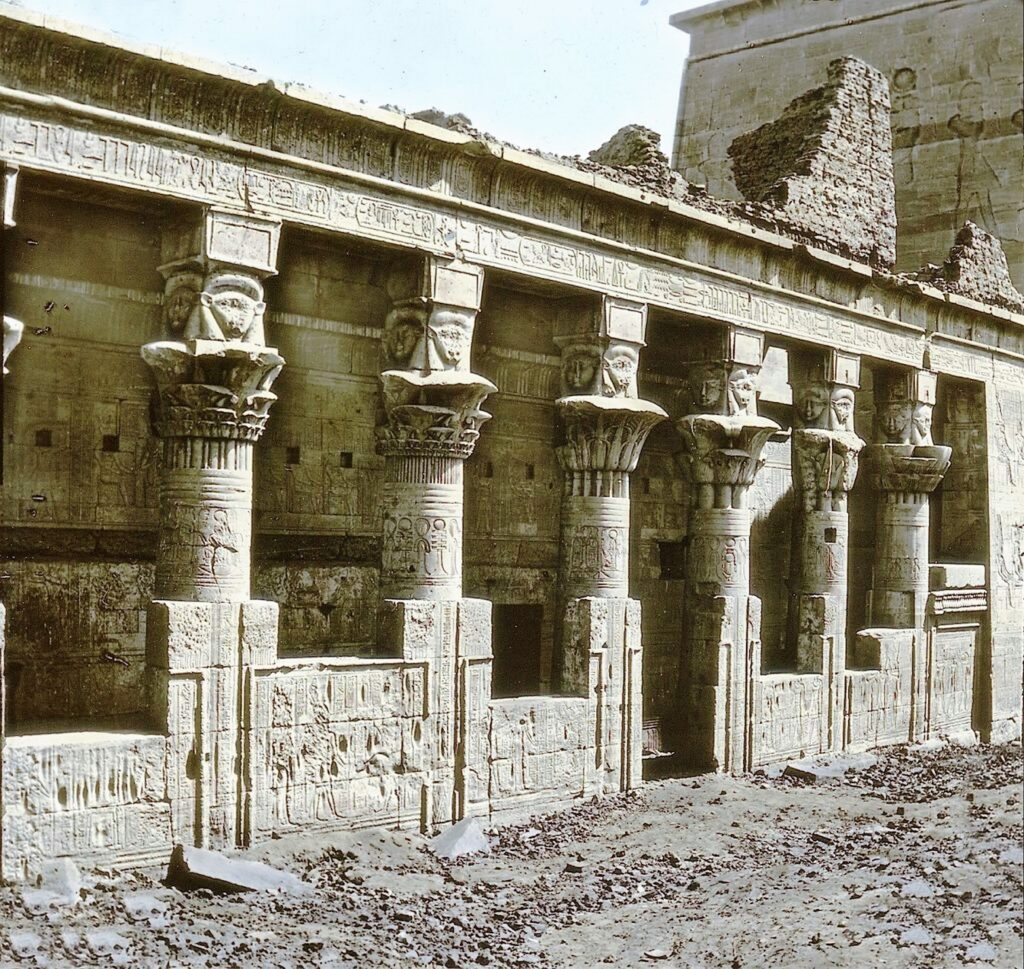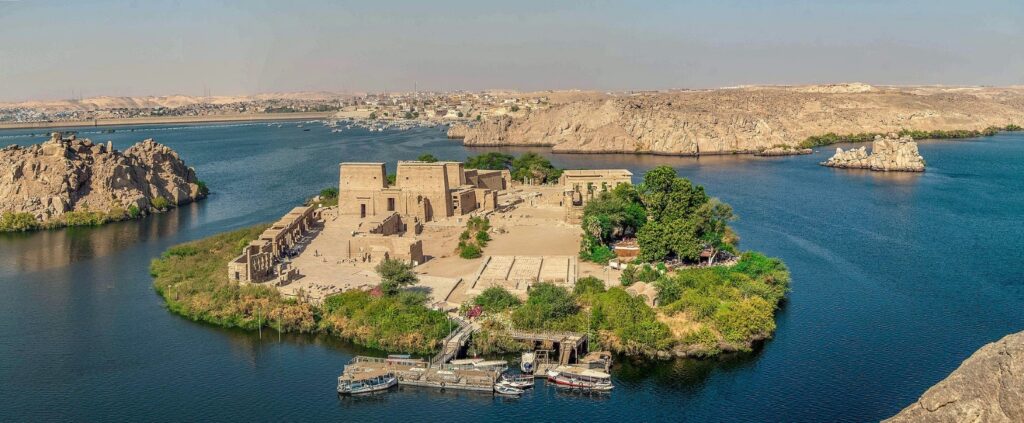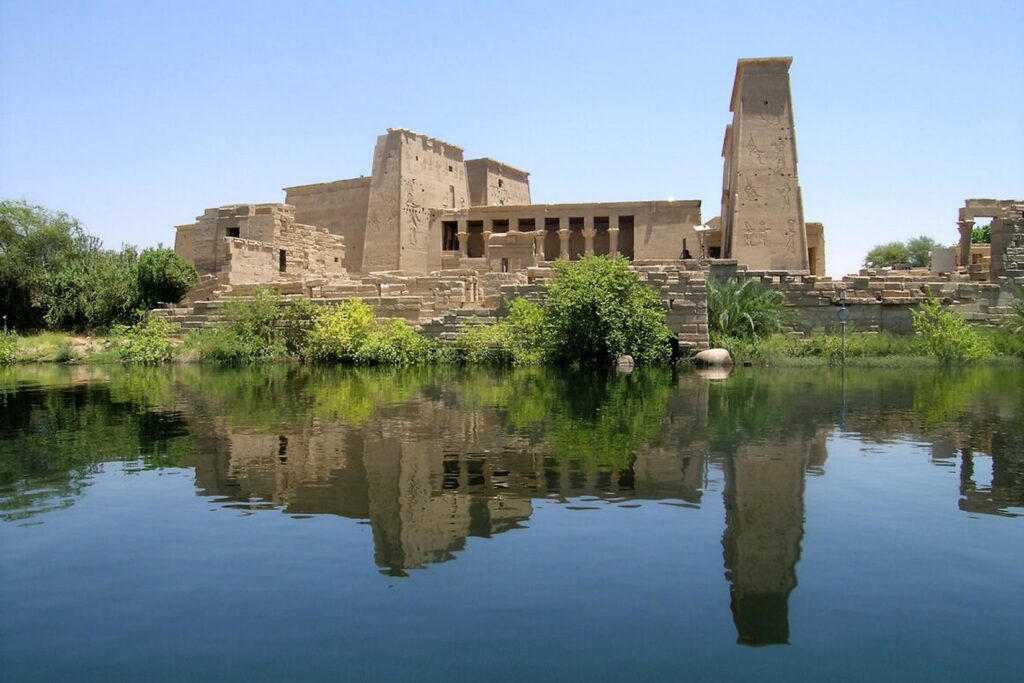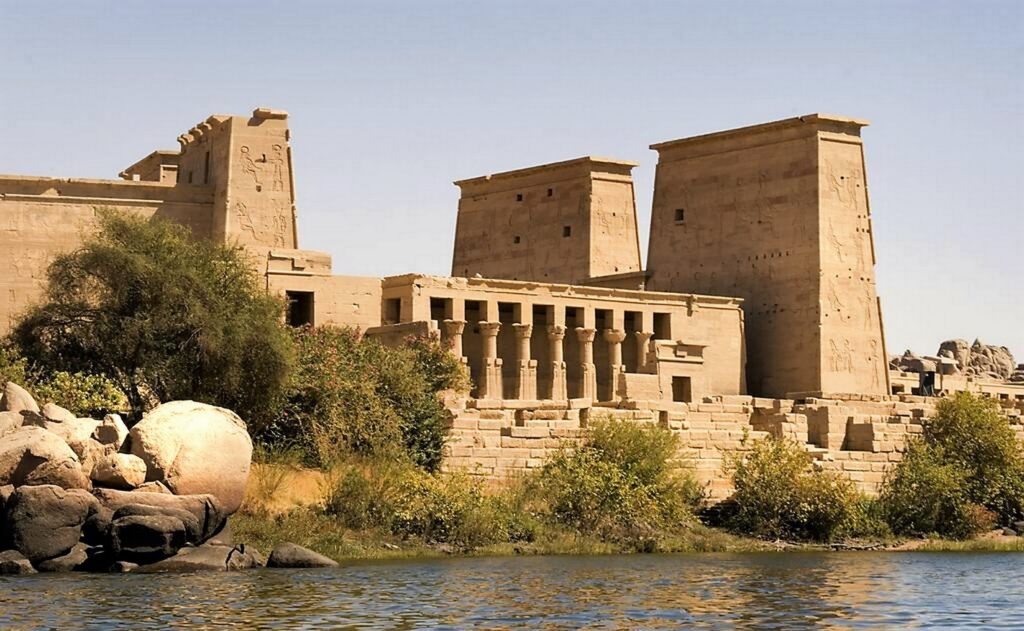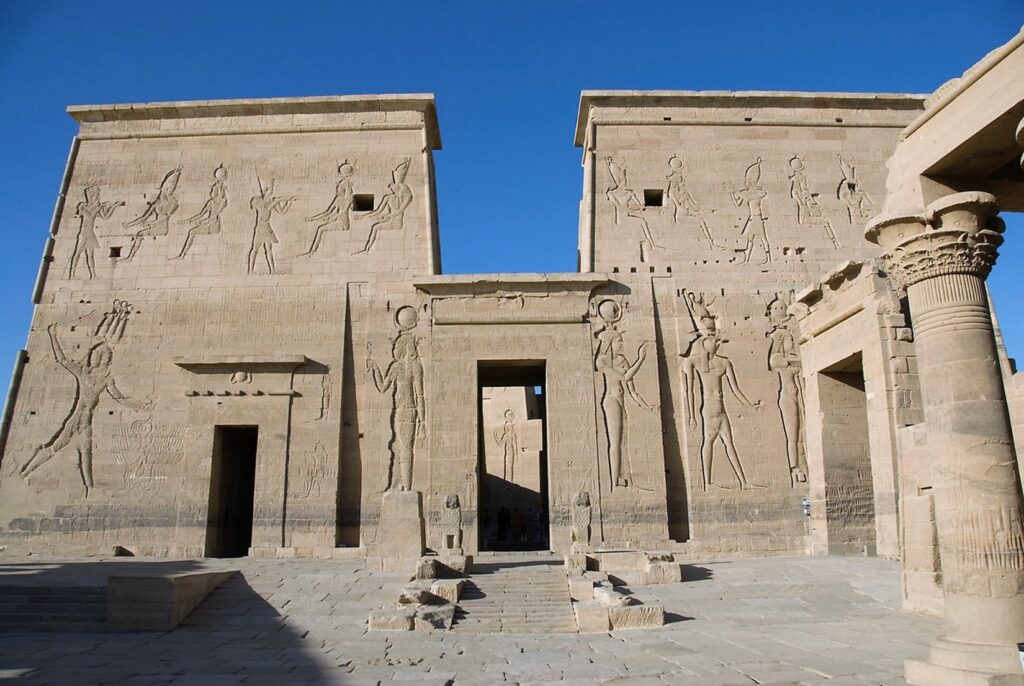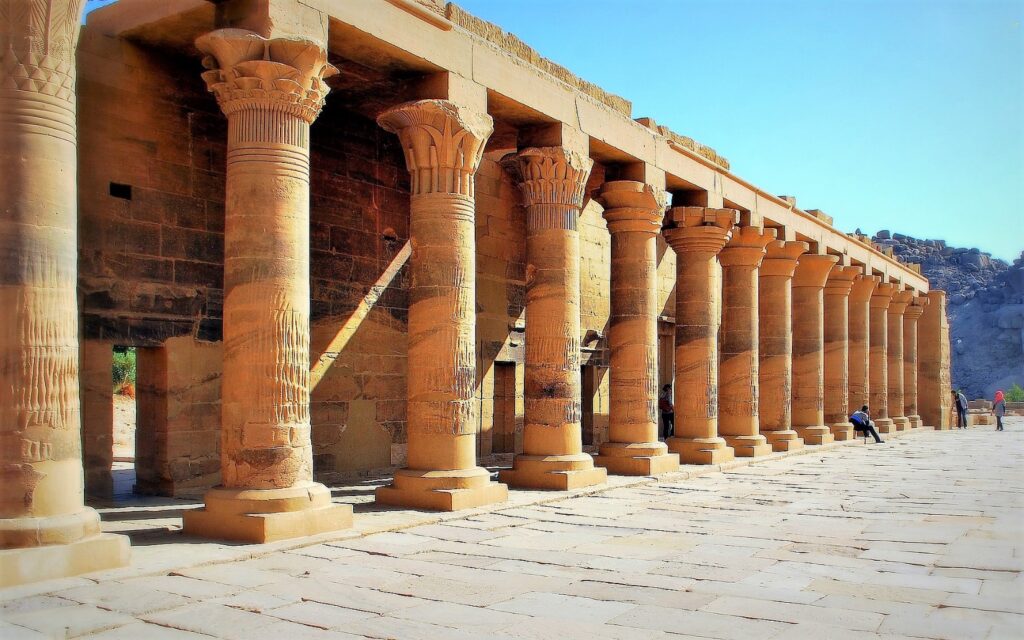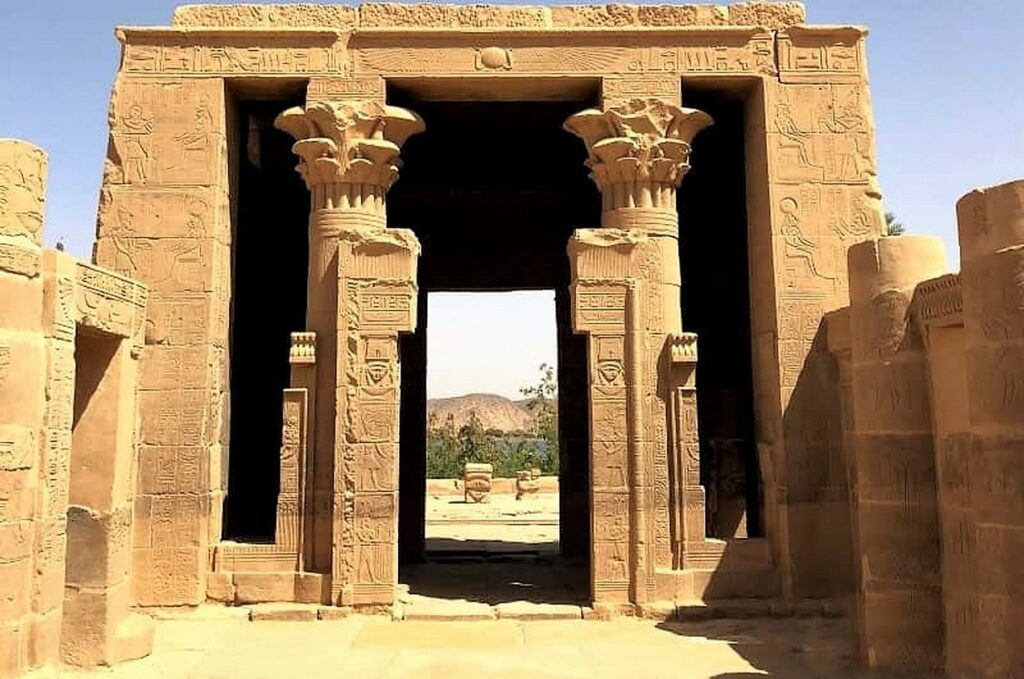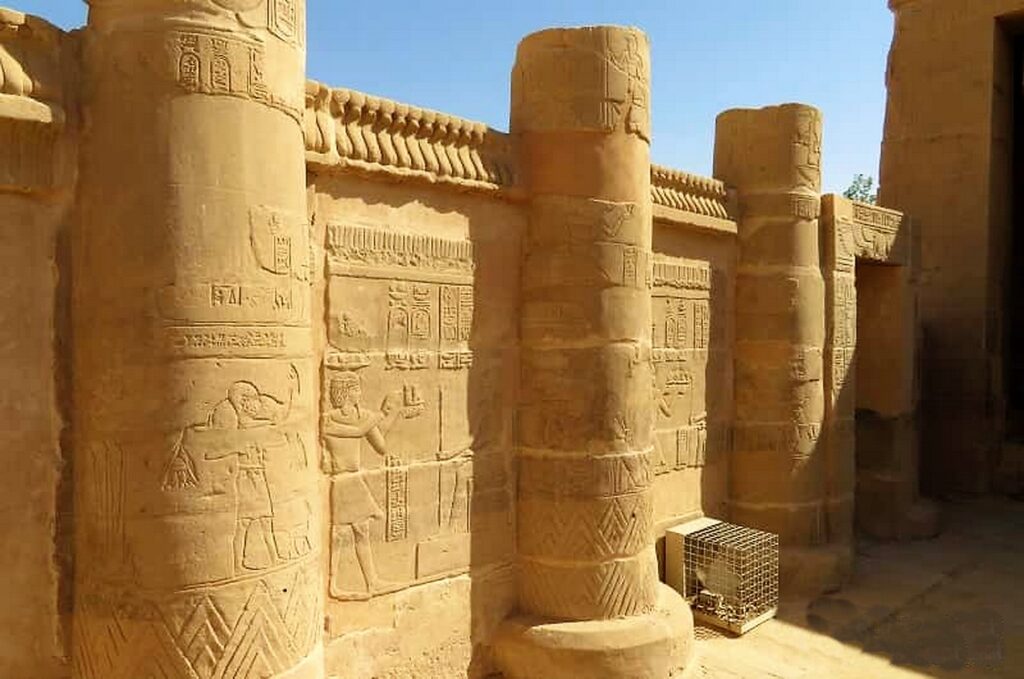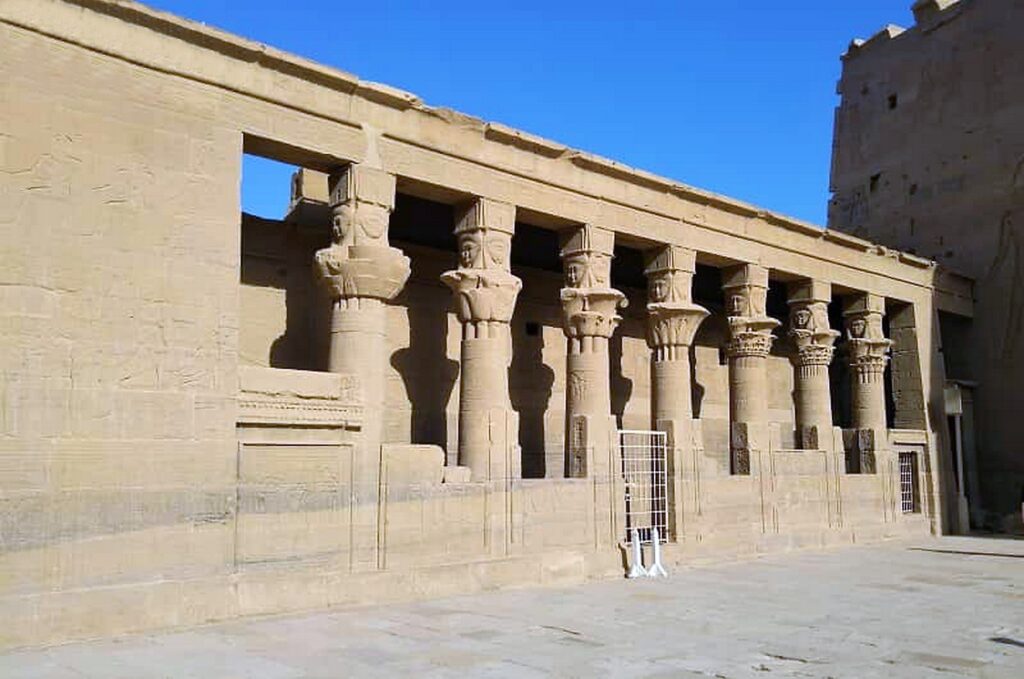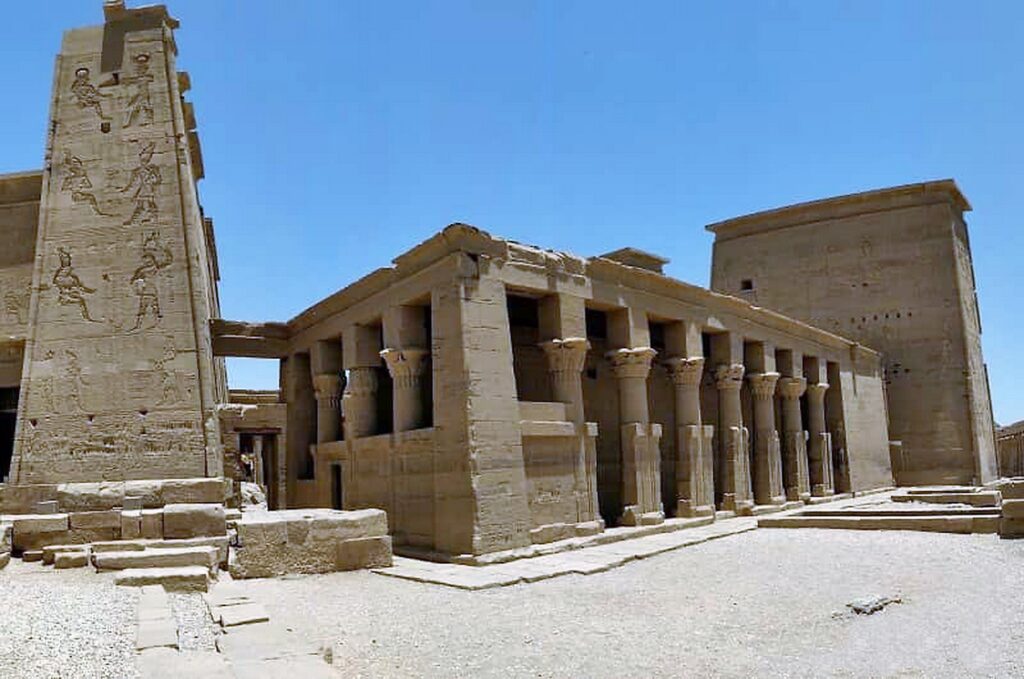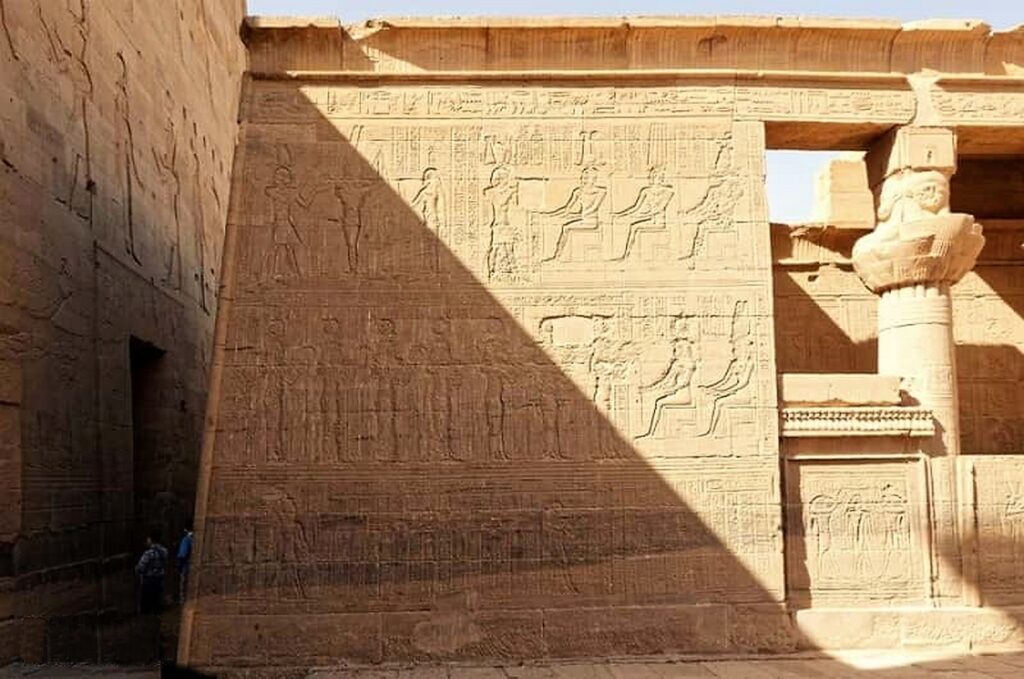Built beginning ca. 280 BCE
Built during the reign of Ptolemy II (Egypt’s Greco-Roman Period), the Temple of Isis at Philae is dedicated to Isis, Osiris, and Horus. The temple walls contain scenes from Egyptian mythology of Isis bringing Osiris back to life, giving birth to Horus, and mummifying Osiris after his death.
The obelisks in front of the temple were removed in 1918 by British Consul Henry Salt and his assistant Giovanni Belzoni, and are now in a garden in Dorset, England.
The temple was in danger of being submerged forever with the construction of the new Aswan dam (1960-1970), which flooded the area. Fortunately, the Egyptian government and UNESCO worked together to pump the area dry and relocate the entire temple, stone by stone (50,000 stones!), to a nearby island called Agilka, where it stands today.

